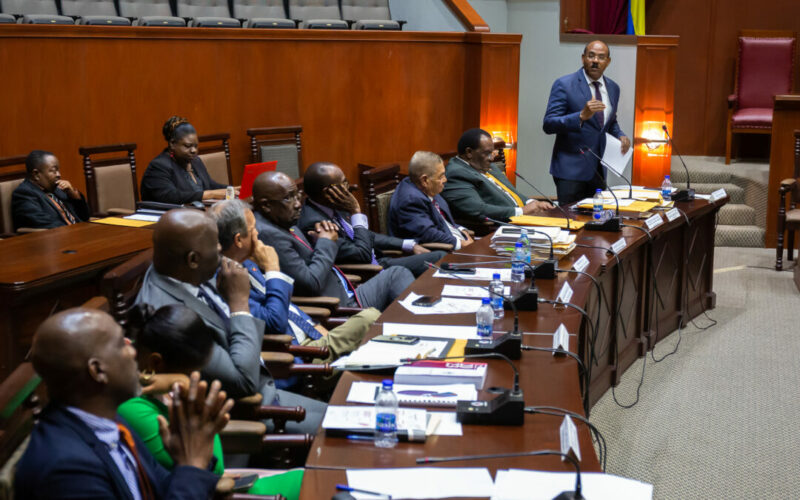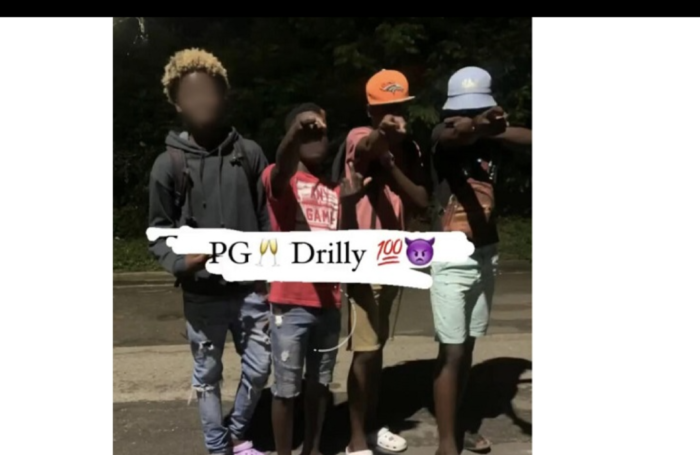
Youth Intervention is the Best Anti-Gang Measure
By Kieron Murdoch | Opinion Contributor
Parliament is to debate an anti-gang bill next week. Gangs have been spotlighted recently due to reported youth involvement in such groups. While this legislation seems timely, it should not cause us to forget that we also need to take steps to divert youth away from delinquency altogether. In some respects, youth intervention is the best anti-gang measure we can deploy.
A youth intervention programme is a programme designed to intervene when youngsters are at risk of, or beginning to make bad decisions that are likely to have lifelong negative impacts. It aims to prevent juvenile delinquency, support academic achievement, and develop youth into good citizens.
Such a programme, if well executed, could improve the engagement of at-risk youth in the activities that will naturally steer them clear of delinquency, juvenile offending, and gang involvement in the first place. It should aim to provide things like academic support, mental health services, disability assessment and support, drug rehabilitation, sports, non-sports extracurricular activity, and mentorship.
Just as academic achievement can catapult a young person from the worst of circumstances into a future of prosperity, so too can academic underachievement plunge some youngsters down a path to delinquency. We ought not be so comfortable with the idea that some youth simply will not graduate, develop strong literacy, or gain economically valuable skills and knowledge. For some at-risk young people, finishing school and gaining qualifications may be the difference that keeps them on the straight and narrow.
On mental health, we tend to underestimate how many of the challenges experienced by our youngsters are due to emotional and psychological issues that go unaddressed. But unfortunately, mental health is still a taboo phrase in some respects. But some youngsters are growing up needing the intervention of a professional counsellor to grapple with the feelings and behaviours brought on by their circumstances, yet they do not get the help they need.
Many are manifesting the trauma of various forms of abuse, as emotional abuse and physical abuse (masked as legitimate discipline) is pretty normalised in the Caribbean. Being able to improve their mental health in adolescence could make a difference for some of the youngsters who are most-at risk of going astray. Providing no-cost mental health services to our at-risk youngsters should be part of any holistic suite of activities and services made available to them.
Learning disabilities must also be addressed, and in a more comprehensive and compassionate way. While we don’t like to admit it, there are some criminals who as youth, went through school with a learning disability, struggled to achieve academically, got no support, were looked upon as “troublesome” or “misbehaved”, and were left to associate with other “troublesome” youth who only served to influence them in worse and worse behaviour. Assessing and addressing learning disabilities in a more effective way is key to improving the outcomes of some of our most at-risk youngsters
Next is substance abuse rehabilitation. Addiction and dependency is a public health issue which requires a public health response. Unfortunately, we do not have much of a public health response to the pandemic of marijuana usage amongst many of our youth, especially our at-risk young males. Other substances are abused as well. These have the potential to dull their ambition, remove their focus, and promote their underachievement.
Give marijuana to a teenager who is already grappling with several other factors in their life and you are risking worse outcomes. Professionals in the field of addictive medicine and mental health often render their services for free to desperate parents seeking help for their children, for lack of an effective public programme. This is why a publicly funded, accessible and effective drug rehabilitation programme for juveniles (and adults) must be part of a suite of activities and services available to our young people.
Next is sports. The transformative impact of sports on youth is well documented. For our academically struggling young males especially, sports provide an opportunity to excel at something nonacademic, providing a space for them to be recognised, appreciated, and valued, when these important feelings may be absent for them in the classroom. Linking sports to academics can often be a means of encouraging them to work harder at academics.
It also absorbs free time which might otherwise be spent poorly. It can be a welcome distraction from the troubles that may affect their lives and an outlet for their energy and competitiveness – an outlet that also teaches them to temper those things in a rules based system and in an environment that promotes respect and sportsmanship. Increasing access to sports, promoting participation, improving sports administration, combating the abuse of youngsters, making financially restrictive sports more affordable – these actions can make sports more impactful in the lives of those youngsters who would benefit from it most.
Non-sport extracurricular activity is also important. We ought not assume that everyone is the same and we may be surprised at the creative ability of youngsters when we give them the opportunity to write, learn an instrument, sing, engage in drama, or work with their hands., etc. We also need to devise extracurricular programmes that we know will appeal to young males in particular.
Finally, a formal structure to provide mentorship to youth on a registered programme could also be an idea worth exploring. Some youth genuinely lack for good role models and mentors in their parents, other their community. But any programme seeking to deploy mentors first needs to prioritise child safety. It could not be a ‘wash your foot and come’ affair.
A scrupulous examination of any potential candidates would be warranted. This must be done with a view to determining their character, temperament, experience with youth, track record, integrity, and references. We do not want to recruit predators and abusers to serve as mentors and create trauma and scandals within what should be a positive programme. Mentors would also need to go through initial training and do continuous training on what is expected of them, what interactions they ought to aim to have with youngsters, what constitutes inappropriate interactions, and general guidelines for their own behaviour.
The intervention programme should serve as a one-stop shop where a parent or social worker seeking support for a youngster could immediately access all of what we discussed and get funded support for the enrollment of the youngster. Where would the funded support come from? Before we say the government doesn’t have the money, we should ask: is it totally impossible that a charitable fund could be created to support our at-risk youth?
For example, imagine if there was an incorporated non-profit called “Building Better Futures Inc.”. Its purpose is to raise money for at-risk young people to sponsor their participation in transformative activities and their access to critical services. Its board comprised all volunteer members – two reputable accountants, two professionals in the area of youth development, and an attorney of high repute.
Its chief spokesperson or executive director is a notable retired sportsman or sportswoman who holds sway in Antigua and Barbuda. Further, it makes every effort to be transparent with its affairs. Its income and expenditure are published at its website online, and it hosts scheduled press events to highlight its operations and address questions. It is audited by a reputable firm on a pro-bono basis. Could such an entity not convince us to reach into our pockets and donate to the cause of our young people?
What would the government’s role be? Establish legislation for the operationalisation of the at-risk youth programme, staff it, nominate a Director, and find reputable groups and professionals to participate. The programme would need to assess the worthiness of any potential participating partners, do needs assessments, monitor the progress of youth, and establish and manage the mentorship sub-programme.
It would need trained social workers to supervise the progress of the youth enrolled. It would also need to establish a drug counselling and rehabilitation sub-programme since there is no national programme to lean on.
The non-profit would enter an agreement with the intervention programme to sponsor the youngsters. For accountability, the non-profit could make the funding conditional, requiring the programme to commit to being audited, to having the effectiveness of the programme evaluated, and to monitoring the progress of beneficiaries.This is an example of how government and civil society could work together. Does this concept seem so far-fetched? If it does, what does that say about us as a society?
The solutions to the challenge we are facing are not beyond our grasp. It is for us to seize them. Our youngsters at least deserve that.
About the writer:
Kieron Murdoch worked as a journalist and later as a radio presenter in Antigua and Barbuda for eight years, covering politics and governance especially. He is an opinion contributor at antigua.news.
If you have an opinion on the issues raised in this editorial and you would like to submit a response by email to be considered for publication, please email [email protected].






Addiction is a real problem,The rehabilitation and therapy would be the best thing
Most of the criminals where outcast from young,what you’re saying is true
If they address this now the youths would stand a better chance
Many people use marijuana to cope with the life situations
Bad parenting is one of the main reasons for the juveniles behaviour
Not true,some parents try their best and children choose their ways
The education/school system is what should be achieving all that.
For what society are we preparing our youth?
For what youth are we preparing our society?
Neither physically, psychologically, academically, emotionally nor temperamentally, are all young people the same. But developmentally, we as a nation need them all and we need them all to feel needed.